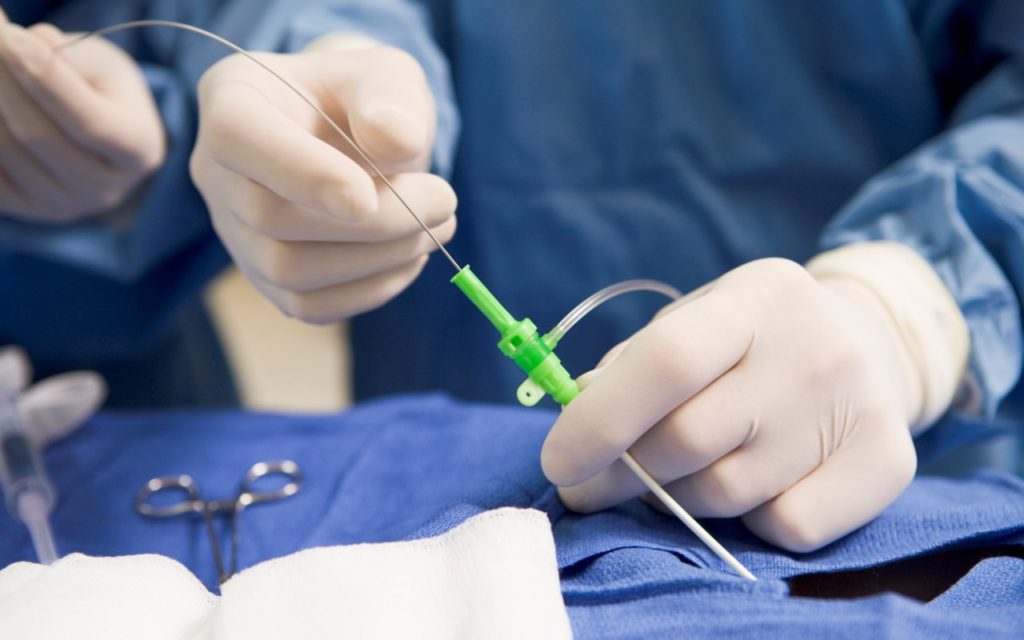Ankle Arthroscopy in Kenya
The ankle is a complex joint made up of three bones, interconnected with 4 major ligaments, making each ankle surgery unique. Because of this complex nature, ankles need ample time to recover.
Most patients are able to return to their normal daily activities in 3 to 4 months after surgery.Ankle arthroscopy is a minimally invasive surgical procedure that orthopedic surgeons use to treat problems in the ankle joint.
Ankle arthroscopy can be used in the diagnosis and treatment of many conditions including:
- Injuries to the cartilage (microfracture)
- Removing excessive scar tissue impingement
- Removing abnormal bone growth due to repeated injury
- Removing loose bodies of bone or cartilage that cause pain or locking
- Fusion of an arthritic ankle joint
- Synovitis (inflammation of the lining of the ankle joint called synovial tissue)
- Diagnosis of unexplained ankle symptoms

Benefits of ankle arthroscopy include:
- Less scarring
- Quicker healing with reduced risk of infection
- Less time in hospital
- Quicker rehabilitation
- Better results for many procedures, including ankle fusion surgery
Risks & Complications of Ankle Arthroscopy Surgery
Ankle arthroscopy is a relatively safe procedure with low complication rates.
- As with any procedure involving the introduction of instruments to a normally sterile area, infection is a risk
- Bleeding from cut blood vessels may also occur
- Some people may have local nerve damage from the procedure making the overlying skin numb
- Bone necrosis
- Osteolysis (inflammation leading to the destruction of the bone)
- There are risks in using any kind of anesthesia, depending on the type that is chosen

What is the recovery time for ankle arthroscopy surgery?

Tips for a speedy recovery from ankle arthroscopy
1. Soothe the swelling
Swelling is a natural part of the recovery process, but it is important to properly address it when it occurs.
The RICE method is very effective:
- Rest: As difficult as it may be with a busy schedule, it is vital to give your body the resting time it needs to recover.
- Ice: Ice is a fantastic way to reduce swelling by reducing blood flow to the affected area. Simply placing a bag of crushed ice on your ankle is effective, but don’t leave it on for extended periods. If you notice redness under the ice pack, remove it for a short while.
- Compression: After surgery, your ankle will be wrapped in dressings that need to be changed periodically. Keep the dressings dry and wrapped snugly, but not so tight as to compromise circulation in the area.
- Elevation: Keep your ankle elevated as much of the time as possible. Elevation helps reduce blood flow to the area, keeping swelling to a minimum. If you can keep your ankle elevated above your heart, even better.

2. Keep the knee isolated
Keeping your ankle isolated and immobilized is important to both your recovery and managing your pain levels.
Crutches are a common solution for getting around, but you do run the risk of bumping your ankle as you move about.
Consider using a knee walker instead. These assistive devices keep your ankle out of harm’s way while making it easy to get around during your recovery.
3. Watch for signs and symptoms of infection
If signs or symptoms of infection occur, call your doctor.
Signs of an infection include:
- Fever
- Pus draining from the incisions
- Red streaks from the incisions
- Redness of the skin around the incisions
- Increasing pain more than two days after surgery

With the amount of time it can take for an ankle to fully heal, it is important to take every measure possible to ensure a full, efficient recovery.
Our team of Board Certified Orthopedic Surgeons in Kenya can get you the care you need to restore your ankle to perfect working order. Request an appointment online, or contact us today with any questions.












